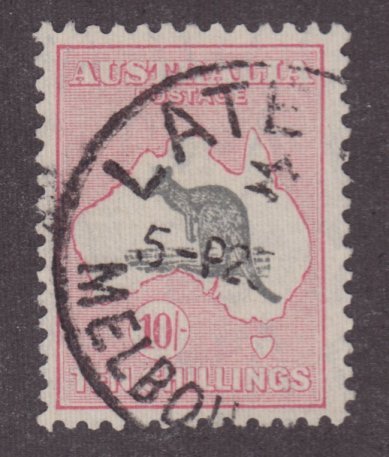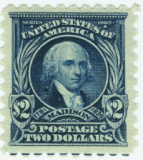
Discussion - Member to Member Sales - Research Center

Discussion - Member to Member Sales - Research Center

In my collection of “Robes” I have 17 which consist of different papers and various shades. The centrepiece stamps (which I unfortunately do not have) are the two £1 specimens.
Yes there are really two and not the one everyone is familiar with. The 1938 specimen (John Ash) is the well-known issue, in mint unhinged condition and well centred it doesn’t come cheap, it is a very scarce stamp; the other specimen, the McCracken issue, it is rare and worth a lot more.
Eventually I will purchase both to complete the Coronation set.
The B.C.O.F. collection is slowly growing.
The collection is still ongoing as there are a few more thin papers, shades and offsets to collect.
I am awaiting the arrival of a few more shades of the 10/- and £1 issues (they will be arriving Tuesday morning), the current collection will be uploaded on Tuesday.

2 Members
like this post.
Login to Like.
Good work Robert, I hope you snag your missing stamps.
I like that set of stamps a lot (Robes), and your post reminds me that I need to upgrade my "not so nice" used set to something a bit more presentable. I want that set Unused.
What device are you using to determine "thin" paper? Or is it a visual cue?
Cheers,
Eric

Login to Like
this post
Hi Eric
I hope I do collect both, I'll continue to haul in my pennies to secure those two £1 specimens (have been saving a long time), I don't think the McCracken specimen will be coming any time soon, but I'll be prepared, the two together are worth $4 thousand dollars
If you like the Robes wait till you see the 17 I will be showing; one of the £1 stamps was issued in 1949 by McCracken though he left the imprint of Ash (the former printer 1937-1940) on it. It has the deep colour which identifies it as McCracken but it is on thick paper which is also an Ash trademark.
There is no device I use to determine thick from thin, with the thin you can clearly see the front from the back, with thick you cannot.
Also another tell-tale way is the shade; thick is light ink and thin is a deep ink. In my collection identifying by colour is a little difficult as there are a few different shades.
Also a digital micrometer can determine the thickness of a stamp, even though I have one I refuse to use it on a stamp fearing that I could ruin it (I'll leave it to the experts to use them).
It seems I will be getting the new additions either tomorrow (Saturday) or Monday. I always collect mint unhinged unless it cannot be helped.
Such as my ½d Wallaroo very early state cracked plate which the ACSC states only one example had been seen, I have it in my collection; it is very lightly hinged; frustrating as there is no other. But as it is rare I will ignore my rule of thumb.
Cheers
Robert

1 Member
likes this post.
Login to Like.
It has been a pleasure to be able to watch you grow and show your collection. Thanks for sharing.

Login to Like
this post
Thanks smauggie, I might be beating my own drum but I think you will be impressed by what I currently have. The most difficult stamp I obtained is the unassuming 1942 thin paper 5½d Emu, I was very lucky that it was offered to me in private by a specialist dealer as it is very scarce.
The additional "Robes" didn't arrive today as it seems the overnight express does not apply to Saturdays, I'll definitely get them on Monday.

Login to Like
this post
Member ACCC (Australian Commonwealth Collectors Club of NSW)
09 Feb 2017
08:46:01pm
So far I have collected various shades and papers (thick, thin, very thin), unlisted issues, offset and ink stripped issues and specimens of King George VI, my favourite section of this collection is the “Robes”, normally in a “Robes” collection there would be a set of thick papers (5/-, 10/-, £1) and a set of thin papers, in total 6 stamps.
In my collection of “Robes” I have 17 which consist of different papers and various shades. The centrepiece stamps (which I unfortunately do not have) are the two £1 specimens.
Yes there are really two and not the one everyone is familiar with. The 1938 specimen (John Ash) is the well-known issue, in mint unhinged condition and well centred it doesn’t come cheap, it is a very scarce stamp; the other specimen, the McCracken issue, it is rare and worth a lot more.
Eventually I will purchase both to complete the Coronation set.
The B.C.O.F. collection is slowly growing.
The collection is still ongoing as there are a few more thin papers, shades and offsets to collect.
I am awaiting the arrival of a few more shades of the 10/- and £1 issues (they will be arriving Tuesday morning), the current collection will be uploaded on Tuesday.

2 Members
like this post.
Login to Like.

re: Unique combination of King George VI (1937-1952)
Good work Robert, I hope you snag your missing stamps.
I like that set of stamps a lot (Robes), and your post reminds me that I need to upgrade my "not so nice" used set to something a bit more presentable. I want that set Unused.
What device are you using to determine "thin" paper? Or is it a visual cue?
Cheers,
Eric

Login to Like
this post
Member ACCC (Australian Commonwealth Collectors Club of NSW)
10 Feb 2017
07:22:57am
re: Unique combination of King George VI (1937-1952)
Hi Eric
I hope I do collect both, I'll continue to haul in my pennies to secure those two £1 specimens (have been saving a long time), I don't think the McCracken specimen will be coming any time soon, but I'll be prepared, the two together are worth $4 thousand dollars
If you like the Robes wait till you see the 17 I will be showing; one of the £1 stamps was issued in 1949 by McCracken though he left the imprint of Ash (the former printer 1937-1940) on it. It has the deep colour which identifies it as McCracken but it is on thick paper which is also an Ash trademark.
There is no device I use to determine thick from thin, with the thin you can clearly see the front from the back, with thick you cannot.
Also another tell-tale way is the shade; thick is light ink and thin is a deep ink. In my collection identifying by colour is a little difficult as there are a few different shades.
Also a digital micrometer can determine the thickness of a stamp, even though I have one I refuse to use it on a stamp fearing that I could ruin it (I'll leave it to the experts to use them).
It seems I will be getting the new additions either tomorrow (Saturday) or Monday. I always collect mint unhinged unless it cannot be helped.
Such as my ½d Wallaroo very early state cracked plate which the ACSC states only one example had been seen, I have it in my collection; it is very lightly hinged; frustrating as there is no other. But as it is rare I will ignore my rule of thumb.
Cheers
Robert

1 Member
likes this post.
Login to Like.

re: Unique combination of King George VI (1937-1952)
It has been a pleasure to be able to watch you grow and show your collection. Thanks for sharing.

Login to Like
this post
Member ACCC (Australian Commonwealth Collectors Club of NSW)
10 Feb 2017
07:27:11pm
re: Unique combination of King George VI (1937-1952)
Thanks smauggie, I might be beating my own drum but I think you will be impressed by what I currently have. The most difficult stamp I obtained is the unassuming 1942 thin paper 5½d Emu, I was very lucky that it was offered to me in private by a specialist dealer as it is very scarce.
The additional "Robes" didn't arrive today as it seems the overnight express does not apply to Saturdays, I'll definitely get them on Monday.

Login to Like
this post


